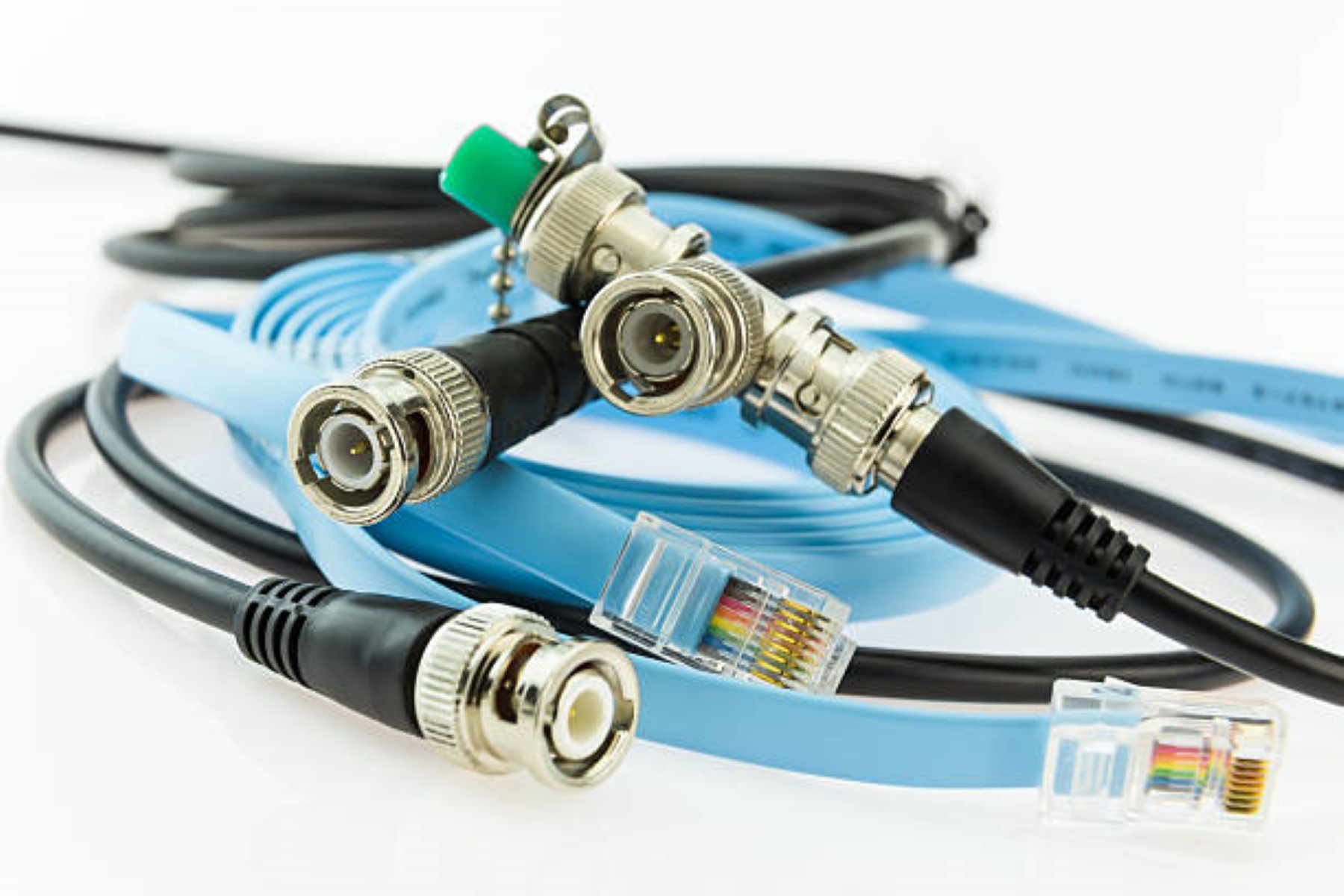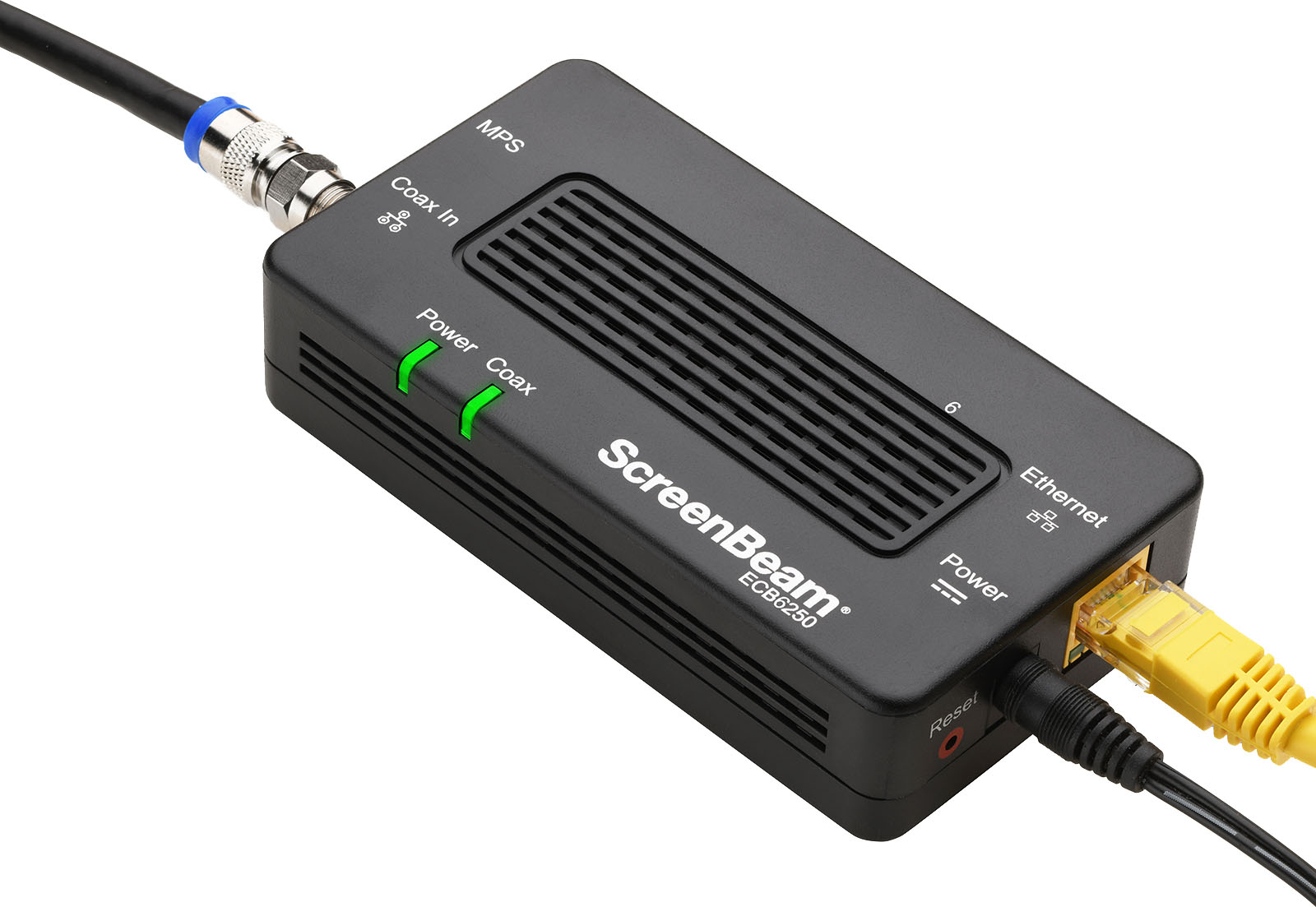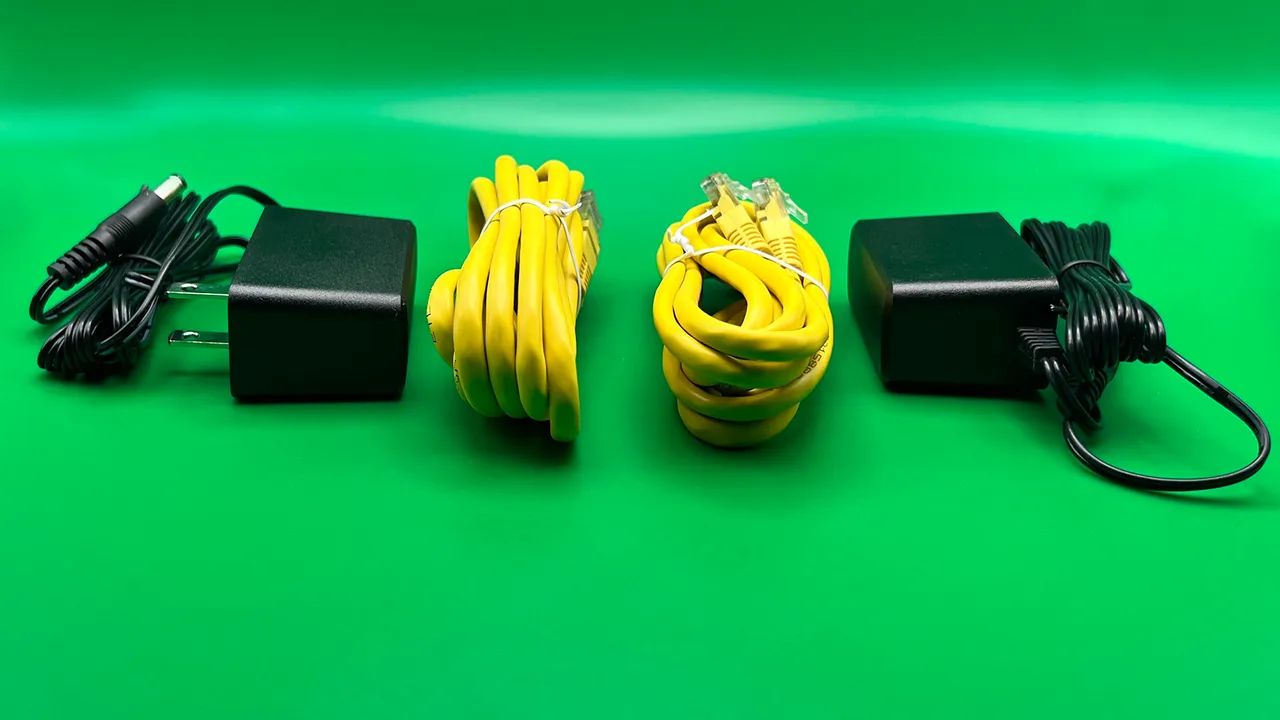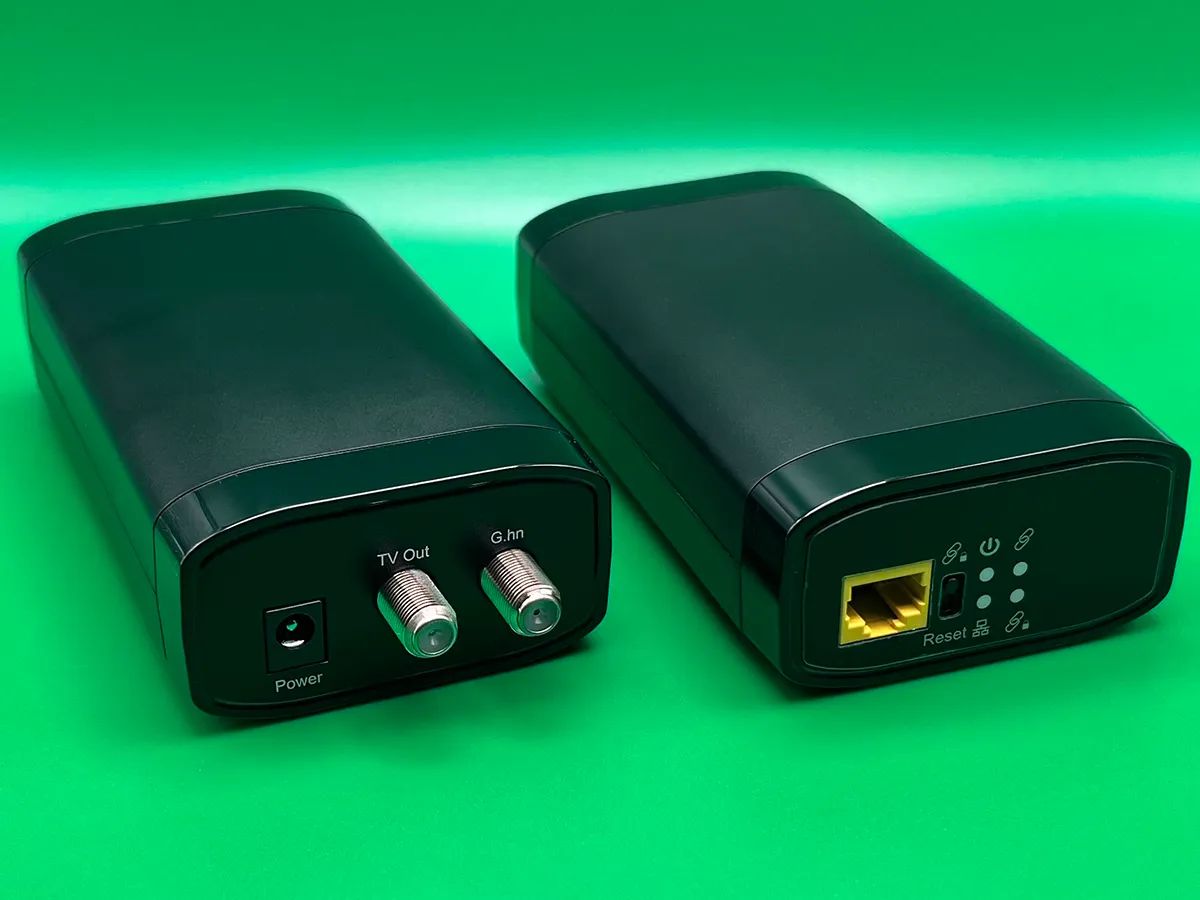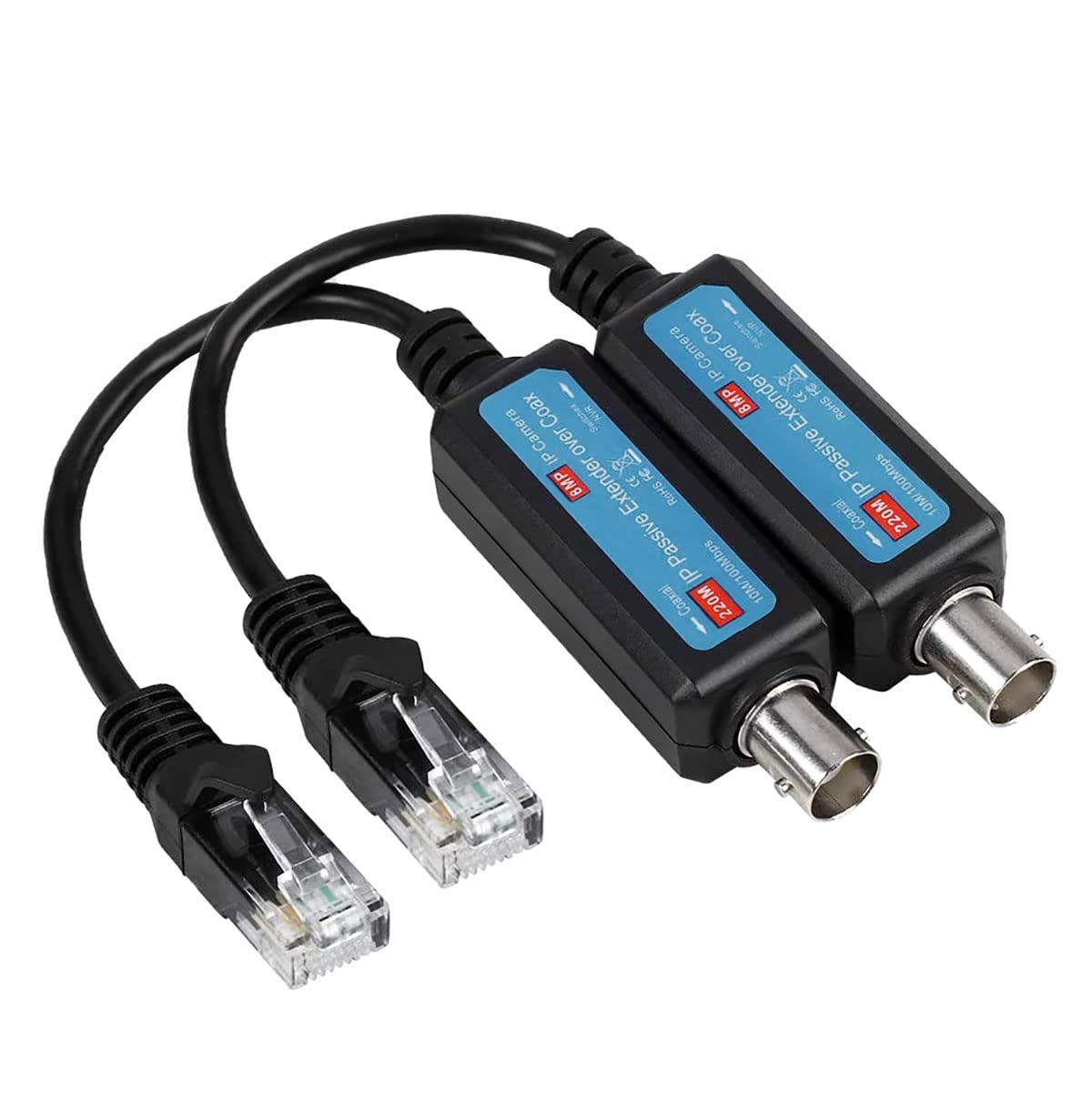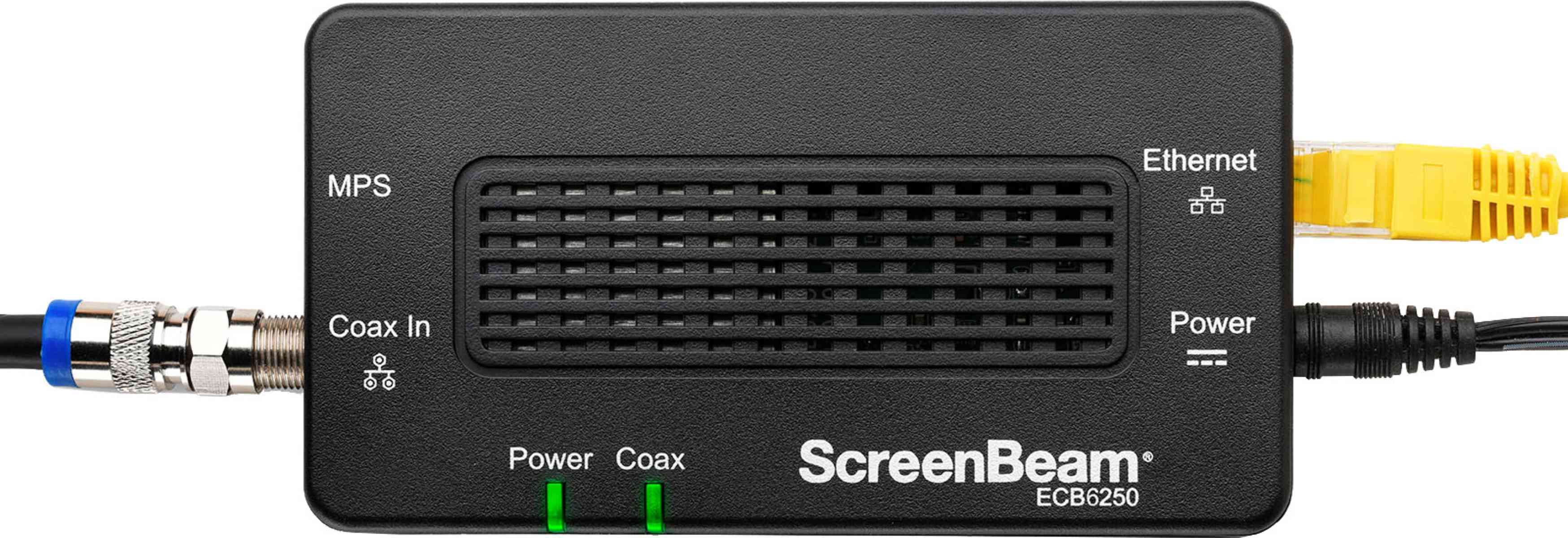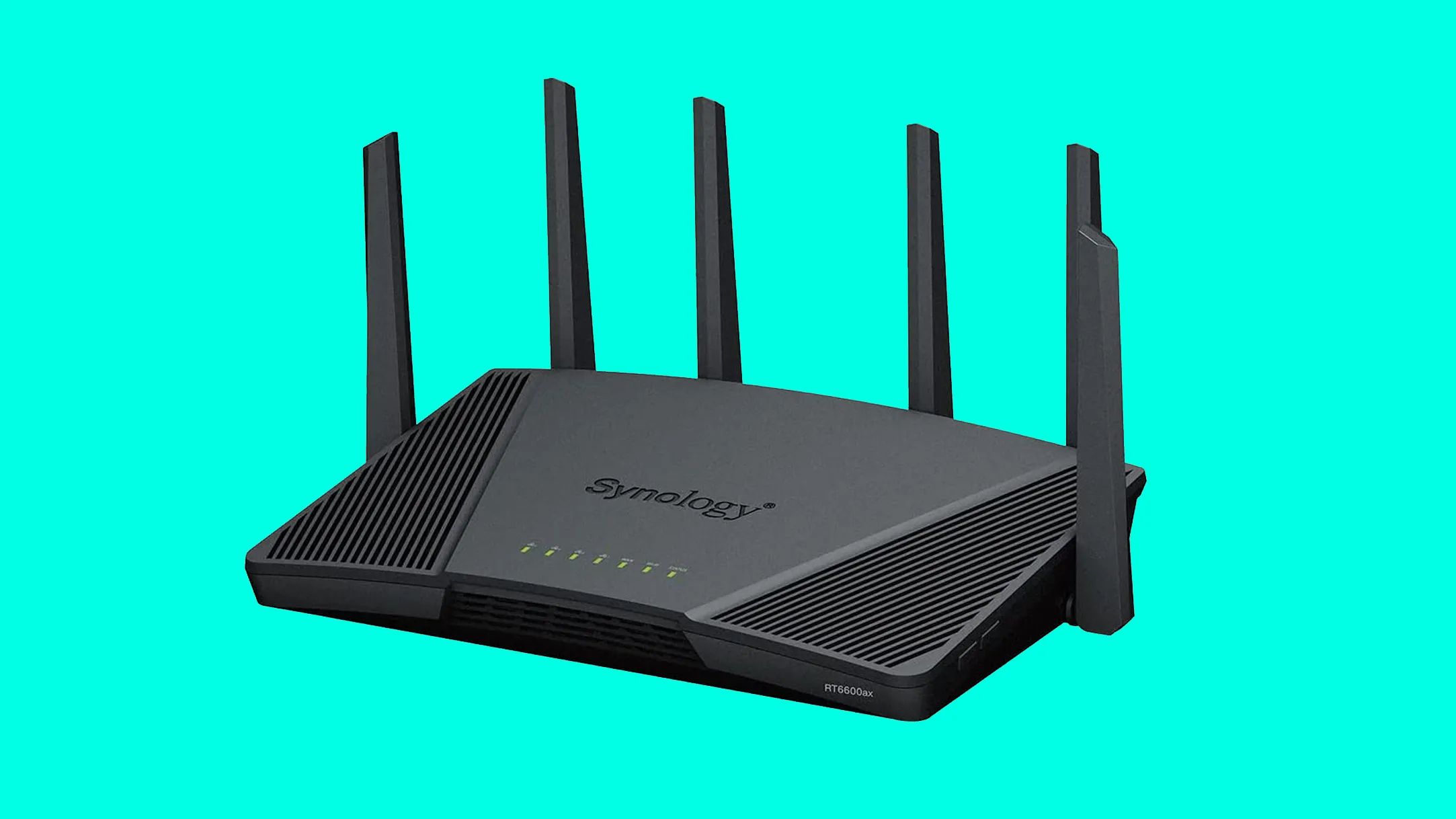Introduction
Welcome to our guide on how to convert coaxial to Ethernet. In the rapid advancement of technology, many households and businesses are transitioning from traditional coaxial cable connections to Ethernet for faster and more reliable internet access. While coaxial cables have served us well for many years, Ethernet has become the standard for high-speed internet and local area network (LAN) connections.
Understanding how to convert coaxial to Ethernet is essential for those looking to upgrade their network connections or maximize their internet speeds. This guide will provide you with comprehensive information on the process, equipment requirements, and troubleshooting tips to ensure a successful conversion.
Before we delve into the details of the conversion process, it is important to understand the difference between coaxial and Ethernet connections. Coaxial cables have been widely used in cable TV and internet installations, transmitting analog or digital signals by using a copper core and insulation layers. Ethernet, on the other hand, is a wired connection that utilizes twisted pair cables to transmit data between devices. It offers higher data transfer rates, lower latency, and is the preferred choice for modern networking applications.
There are several compelling reasons to convert from coaxial to Ethernet. Firstly, Ethernet connections provide significantly faster internet speeds, allowing for seamless streaming, online gaming, and large file transfers. Secondly, Ethernet offers more stability and reliability, reducing the chances of signal loss or interference. Additionally, Ethernet networks are easily expandable, allowing you to connect multiple devices through switches and routers. Lastly, Ethernet is compatible with a wide range of devices, making it ideal for both residential and commercial environments.
Before embarking on the conversion process, there are a few factors you should consider. Firstly, assess your current network setup and determine if your existing devices and infrastructure are compatible with Ethernet connections. Next, evaluate the distance between your devices and plan accordingly for the cable lengths you will need. It’s also essential to check if your internet service provider supports Ethernet connectivity and if any additional equipment or configuration is required.
Understanding Coaxial and Ethernet Connections
Before we dive into the process of converting coaxial to Ethernet, it’s crucial to have a good understanding of these two types of connections. Coaxial cables and Ethernet cables may appear similar at a glance, but they serve different purposes and have distinct characteristics.
Coaxial cables have been widely used for transmitting audio, video, and data signals. They consist of a central conductor, usually made of copper, which is surrounded by insulation, a metallic shield, and an outer protective jacket. Coaxial connections are commonly found in cable TV installations and come in various types, such as RG-6 and RG-11, each with different specifications and signal-carrying capabilities.
Ethernet, on the other hand, is a widely adopted standard for local area networks (LANs) and internet connectivity. Ethernet cables, known as twisted pair cables, consist of four pairs of copper wires that are twisted together to reduce interference. These cables are terminated with an RJ-45 connector, which is commonly used to connect computers, routers, switches, and other network devices.
One of the key differences between coaxial and Ethernet connections is the data transfer rate. Coaxial cables generally have lower maximum data transfer rates compared to Ethernet cables. While coaxial connections might be sufficient for basic internet browsing and standard definition video streaming, Ethernet can offer much higher speeds, making it suitable for high-bandwidth activities such as HD video streaming, online gaming, and large file transfers.
Another important distinction is the maximum distance that the two types of cables can support without signal degradation. Coaxial cables can transmit signals over longer distances than Ethernet cables without significant loss of quality. This makes coaxial cables preferred in situations where the devices are far apart, such as connecting a TV in one room to a cable box in another.
However, Ethernet cables have the advantage of being able to achieve higher speeds and support more advanced networking features, such as Power over Ethernet (PoE) and Gigabit Ethernet. Ethernet connections are also more scalable as they allow for the creation of larger networks with the use of switches and routers.
Understanding the differences between coaxial and Ethernet connections will help you make an informed decision when it comes to upgrading your network infrastructure. In the next section, we will explore the reasons why you might want to convert from coaxial to Ethernet.
Reasons to Convert Coaxial to Ethernet
There are several compelling reasons why you might consider converting your existing coaxial connection to Ethernet. Upgrading to Ethernet offers a range of benefits that can greatly enhance your network performance and overall internet experience.
One of the primary reasons to make the switch is the significant increase in internet speed that Ethernet provides. Coaxial connections have limitations when it comes to data transfer rates, particularly with higher bandwidth activities such as streaming high-definition videos or online gaming. Ethernet, on the other hand, can support much faster speeds, enabling smoother and faster downloads, uploads, and streaming without buffering or lag.
Stability and reliability are also important factors to consider. Coaxial connections can be prone to interference, which can result in poor signal quality and intermittent outages. Ethernet connections, however, are designed to be more resistant to interference, providing a stable and reliable connection. This is especially crucial for businesses or individuals who rely on uninterrupted internet access for critical tasks or applications.
Scalability is another advantage of Ethernet. Coaxial connections can be limited in terms of the number of devices that can be connected, as each device may require its own coaxial cable. Ethernet networks, on the other hand, can be expanded easily by using switches and routers to connect multiple devices. This allows you to build a network infrastructure that can accommodate a growing number of devices, making it ideal for both residential and commercial environments.
Compatibility is also a crucial factor. Ethernet has become the standard for network connections, and most modern devices are designed to work seamlessly with Ethernet. This includes computers, smart TVs, gaming consoles, and streaming devices, among others. By converting to Ethernet, you can ensure compatibility with a wide range of devices, avoiding any potential limitations or compatibility issues associated with coaxial connections.
In summary, the main reasons to convert from coaxial to Ethernet include faster internet speeds, improved stability and reliability, scalability for expanding network infrastructure, and compatibility with modern devices. By upgrading to Ethernet, you can unlock the full potential of your network and enjoy a smoother, more efficient online experience.
Factors to Consider Before Converting
Before you proceed with converting your coaxial connection to Ethernet, there are several important factors to consider. These factors will help you ensure a successful and seamless transition while avoiding any potential complications or compatibility issues.
Firstly, you need to evaluate your current network setup and determine if your existing devices and infrastructure are compatible with Ethernet connections. Check if your devices have Ethernet ports and if they are capable of supporting the desired network speeds. Some older devices may only have coaxial connections or limited Ethernet capabilities, which could affect the overall efficiency of your network.
Next, assess the distance between your devices and plan accordingly for the cable lengths you will need. Unlike coaxial cables, which can be easily extended with additional connectors, Ethernet cables have limitations in terms of maximum length. The maximum length for Ethernet cables is typically 100 meters (or about 328 feet) for a single cable segment. If you require longer cable runs, you may need to consider using Ethernet switches or extenders to bridge the gap.
It’s also important to check if your internet service provider (ISP) supports Ethernet connectivity. While most ISPs offer Ethernet as an option, there may be specific requirements or configurations needed to establish an Ethernet connection. Contact your ISP to inquire about their Ethernet offerings and any necessary steps you need to take to switch from coaxial to Ethernet.
Consider the cost implications of the conversion as well. Ethernet cables and equipment can vary in prices, depending on the quality and length needed. It’s important to budget for any additional costs associated with the conversion, such as Ethernet switches, routers, and cable accessories.
Lastly, it’s recommended to assess your networking needs and future plans. Consider the number of devices you have or plan to add to your network, as well as the types of activities you engage in. If you have a large number of devices or require high-bandwidth activities, such as streaming 4K videos or running a home office, Ethernet may offer a better solution. However, if your network needs are relatively simple and you don’t require the fastest speeds, coaxial may still be a suitable choice.
By carefully considering these factors, you can better prepare yourself for the conversion process and ensure a smooth transition from coaxial to Ethernet.
Equipment Requirements
Converting from coaxial to Ethernet requires a few essential pieces of equipment to ensure a successful transition. Before you begin the conversion process, make sure you have the following items:
- Ethernet Cables: Purchase Ethernet cables of the appropriate length to connect your devices. The length will depend on the distance between your devices and the layout of your network. It’s advisable to buy high-quality Cat 5e or Cat 6 cables to ensure optimal performance.
- Ethernet Switch: If you have multiple devices that need to be connected to the Ethernet network, you’ll need an Ethernet switch. This device allows you to split a single Ethernet connection into multiple ports, allowing you to connect multiple devices simultaneously.
- Router: A router is necessary if you want to establish an internet connection through Ethernet. It connects your local network to the internet and enables communication between devices on both your local network and the wider internet. Make sure your router has Ethernet ports and supports the desired network speed.
- Network Interface Cards (NICs): NICs are hardware components that enable computers to connect to a network. Check if your devices already have built-in Ethernet ports or if you need to purchase separate NICs for each device. Most modern devices, such as computers and smart TVs, come with Ethernet ports built-in.
- Wall Plates and Connectors: To neatly and securely install Ethernet connections, you may need wall plates and connectors. Wall plates provide a clean and professional-looking finish for Ethernet ports, while connectors enable you to terminate Ethernet cables properly. Consider the number of wall plates and connectors you need based on the number of Ethernet connections you want to install.
- Crimping Tool: If you need to customize the length of your Ethernet cables or terminate them yourself, a crimping tool is essential. This tool allows you to attach RJ-45 connectors to the ends of Ethernet cables, ensuring proper connectivity.
It’s worth noting that the specific equipment requirements may vary depending on your network setup and the extent of the conversion you’re undertaking. It’s advisable to consult with a network technician or refer to the manufacturer’s instructions for more detailed guidance and equipment recommendations.
By ensuring you have the necessary equipment ready, you can proceed with the conversion process smoothly and efficiently, ensuring a successful transition from coaxial to Ethernet.
Step-by-Step Guide: How to Convert Coaxial to Ethernet
Converting from coaxial to Ethernet may seem like a daunting task, but with the right steps, it can be a straightforward process. Follow this step-by-step guide to successfully convert your connection:
Step 1: Assess Your Network Setup
Evaluate your current network setup and identify the devices that need to be connected via Ethernet. Determine the distance between the devices and plan for the necessary Ethernet cable lengths.
Step 2: Gather the Required Equipment
Ensure you have all the necessary equipment as mentioned in the previous section. This includes Ethernet cables, an Ethernet switch (if needed), a router, NICs, wall plates, connectors, and a crimping tool.
Step 3: Prepare Your Workspace
Set up a clean and organized workspace where you can work comfortably. Clear any clutter and ensure you have easy access to the devices and cables.
Step 4: Disconnect the Coaxial Connections
Start the conversion process by disconnecting the coaxial cable connections from your devices, such as TVs or cable boxes. Unscrew the coaxial connectors and gently remove the cables.
Step 5: Install Ethernet Wall Plates
If you want to create Ethernet wall connections, install the Ethernet wall plates in the desired locations. Use a suitable-sized hole saw or a utility knife to cut the holes in the wall for the plates.
Step 6: Terminate Ethernet Cables
If you need to customize the length of your Ethernet cables or terminate them yourself, use the crimping tool to attach RJ-45 connectors to the ends of the cables. Follow the specific instructions provided with the connectors and ensure proper connectivity.
Step 7: Connect Ethernet Cables
Connect one end of the Ethernet cable to the Ethernet wall plate (if installed) or directly to the Ethernet switch. Connect the other end of the cable to the Ethernet port on your device, such as a computer or smart TV. Repeat this process for each device you want to connect.
Step 8: Connect to the Router
If you want to establish an internet connection via Ethernet, connect one end of an Ethernet cable to the Ethernet port on your router and the other end to the Ethernet switch. Ensure that the router is adequately configured for Ethernet connections.
Step 9: Power on Devices and Test Connectivity
Once all the Ethernet connections are made, power on your devices one by one. Ensure that each device recognizes the Ethernet connection and establishes a stable network connection. Test the connectivity by accessing the internet or transferring files between devices.
Step 10: Troubleshooting
If you encounter any issues during or after the conversion process, refer to the troubleshooting tips in the next section for guidance on resolving common problems.
By following these step-by-step instructions, you can successfully convert your coaxial connections to Ethernet and enjoy the benefits of improved network performance and reliability.
Troubleshooting Tips
During the conversion process from coaxial to Ethernet, you may encounter some common issues. Here are some troubleshooting tips to help you overcome these challenges:
1. No Internet Connectivity: If you are unable to establish an internet connection after converting to Ethernet, ensure that your router is properly configured for Ethernet connections. Check the router settings and make sure that the Ethernet connection is enabled. Restart the router if necessary.
2. Device Recognition Issues: If a device is not recognizing the Ethernet connection or is not obtaining an IP address, try restarting the device and ensuring that the Ethernet cable is securely connected. If the issue persists, check that the device’s network settings are properly configured to receive an IP address automatically through DHCP.
3. Slow Internet Speeds: If you are experiencing slower than expected internet speeds, check the Ethernet cables for any damage or loose connections. Verify that you are using high-quality Ethernet cables capable of supporting the desired network speeds. Additionally, perform a speed test to ensure that your internet service provider is delivering the promised speeds.
4. Interference and Signal Loss: Ethernet connections are generally more resistant to interference compared to coaxial cables. However, if you are experiencing signal loss or interference on your Ethernet connection, try relocating the devices away from potential sources of interference such as large appliances, electrical wires, or other electronic devices.
5. Compatibility Issues: If you are having compatibility issues with certain devices, ensure that they are compatible with Ethernet connections. Check the manufacturer’s specifications and documentation for any specific requirements or configurations needed for Ethernet connectivity. If necessary, consult with technical support or the manufacturer for further assistance.
6. Cable Length Limitations: Remember that Ethernet cables have length limitations, typically up to 100 meters (or about 328 feet) for a single cable segment. If you require longer cable runs, consider using Ethernet switches or extenders to bridge the distance while maintaining signal quality.
7. Check Cable Connections: Double-check all cable connections, ensuring they are securely plugged in and properly terminated. Loose connections can cause intermittent connectivity issues or signal loss.
8. Seek Professional Assistance: If you have exhausted troubleshooting options and are still experiencing issues, consider seeking assistance from a professional network technician. They can diagnose and resolve more complex network problems and provide tailored solutions specific to your setup.
By following these troubleshooting tips and consulting with the appropriate resources when needed, you can overcome common challenges and ensure a smooth and successful conversion from coaxial to Ethernet.
Conclusion
Converting from coaxial to Ethernet can greatly enhance your network performance, providing faster speeds, improved stability, and scalability. By following the step-by-step guide and considering the factors discussed, you can successfully make the transition and enjoy the benefits of Ethernet connectivity.
Understanding the differences between coaxial and Ethernet connections is essential in making an informed decision about upgrading your network infrastructure. Ethernet offers faster speeds, greater reliability, and compatibility with a wide range of devices, making it the preferred choice for modern networking applications.
Before converting, ensure that your devices and infrastructure are compatible with Ethernet connections. Evaluate the distance between your devices and plan for the required cable lengths. Consider the support from your internet service provider and budget for any additional equipment costs.
By gathering the necessary equipment and following the step-by-step guide, you can successfully convert your coaxial connections to Ethernet. Troubleshooting tips can help you resolve any common issues that arise during or after the conversion process.
Overall, the conversion to Ethernet allows you to unlock the full potential of your network, supporting faster speeds, increased stability, and scalability for future expansion. Whether for personal use or in a business setting, upgrading to Ethernet can significantly improve your online experience and enable you to take full advantage of high-bandwidth activities such as streaming, gaming, and large file transfers.
Embrace the power of Ethernet and enjoy a more efficient, reliable, and robust network infrastructure for all your connectivity needs.







